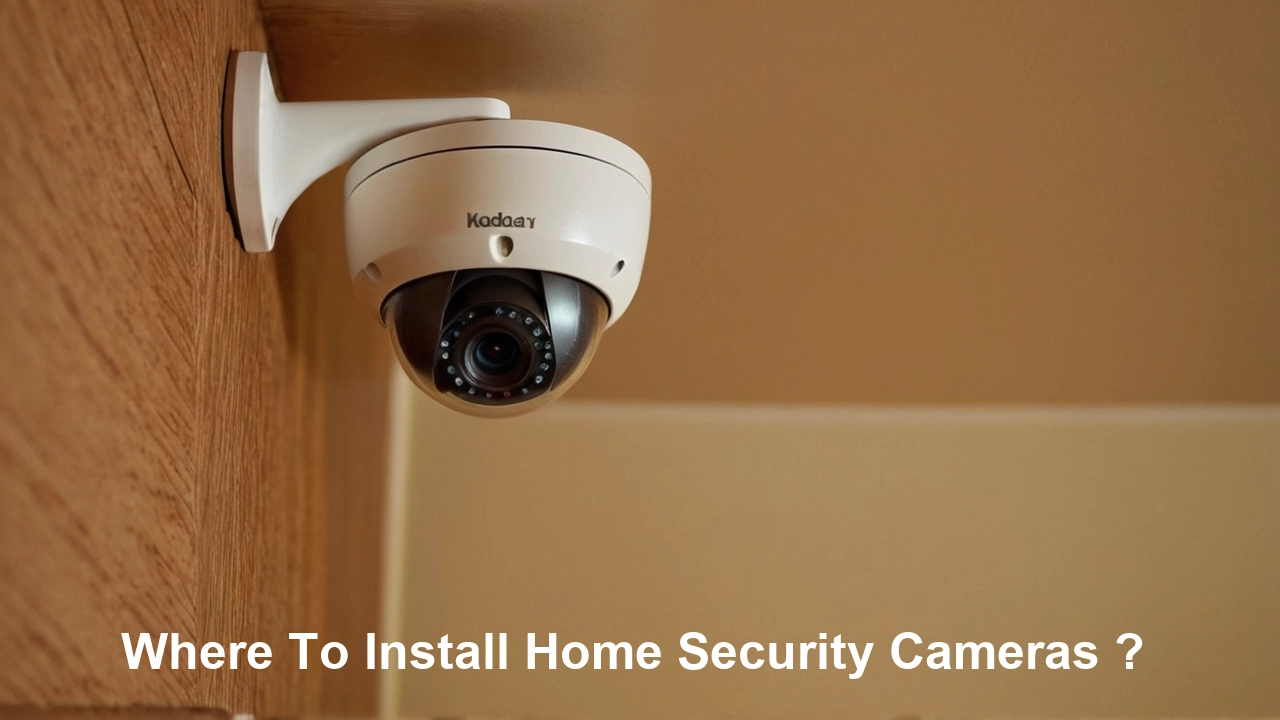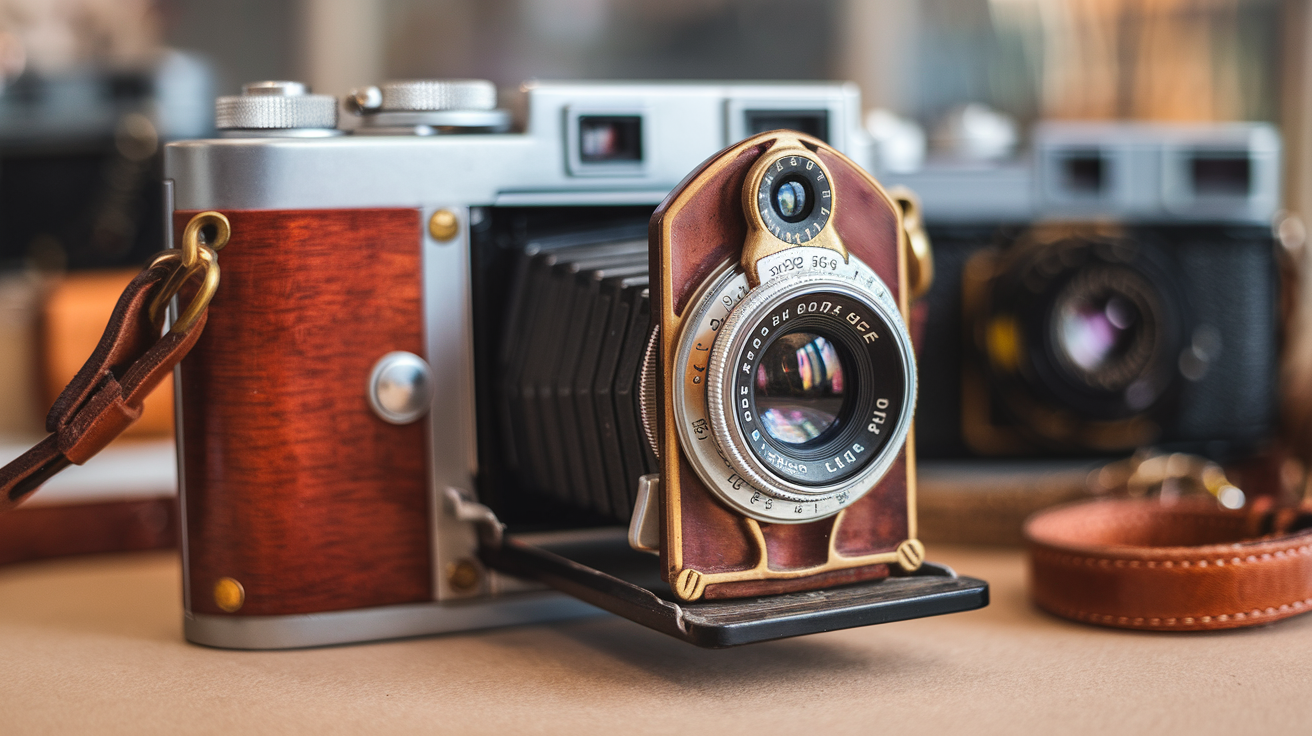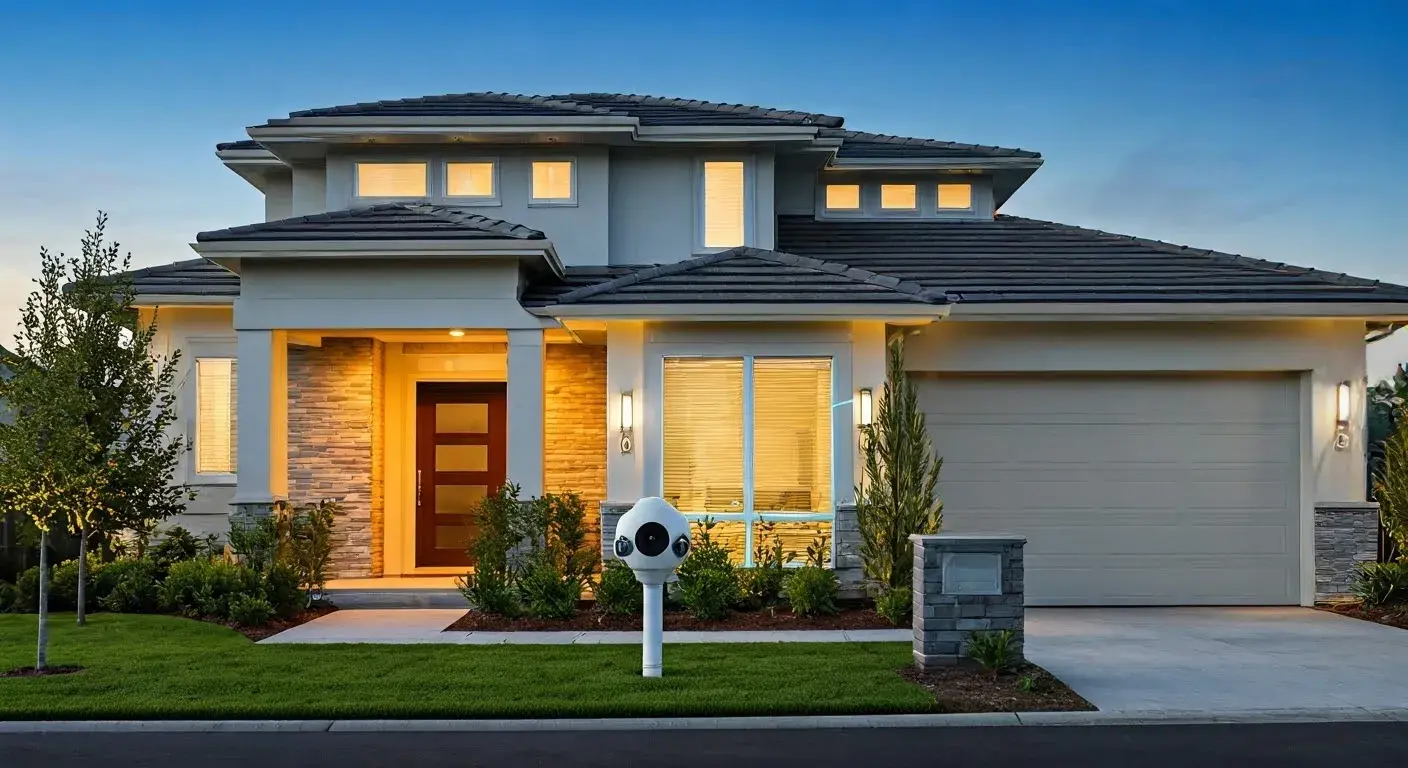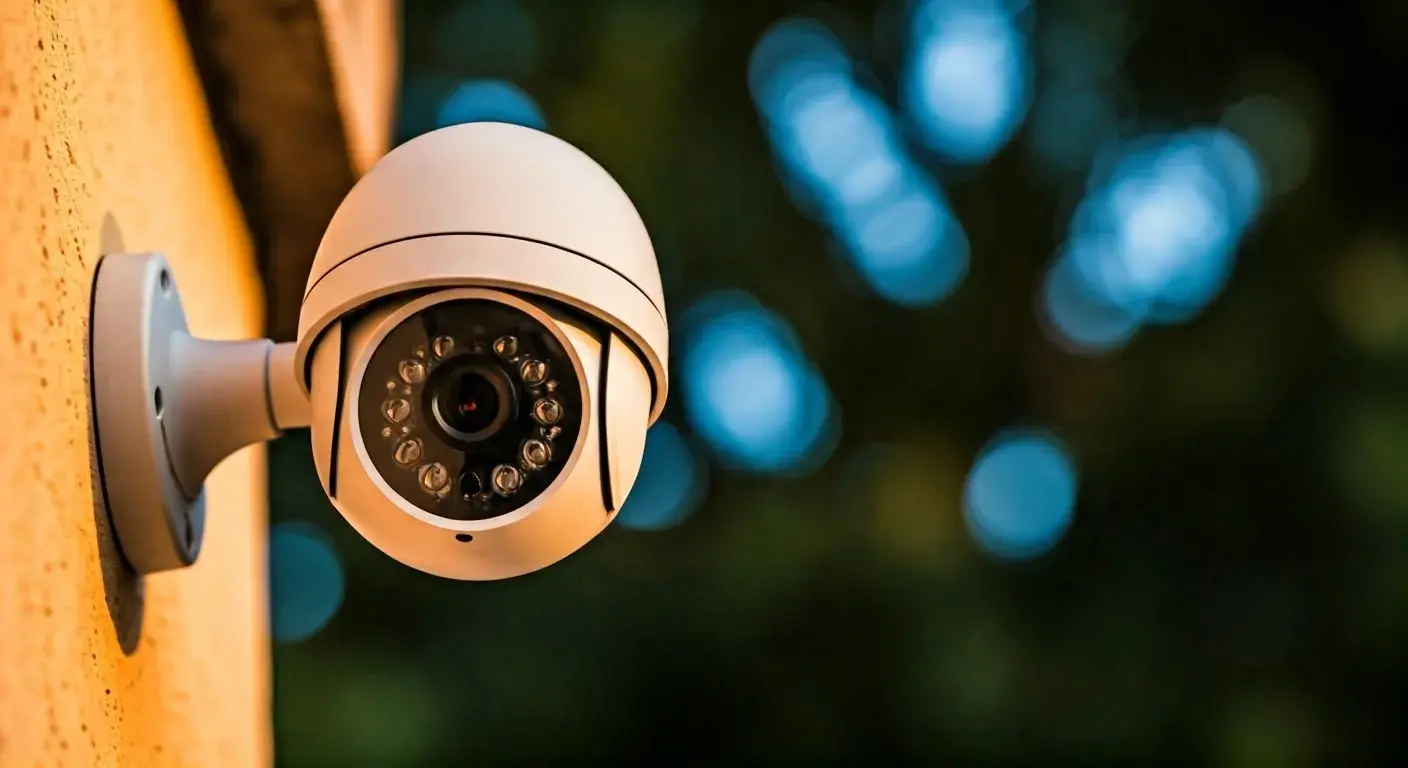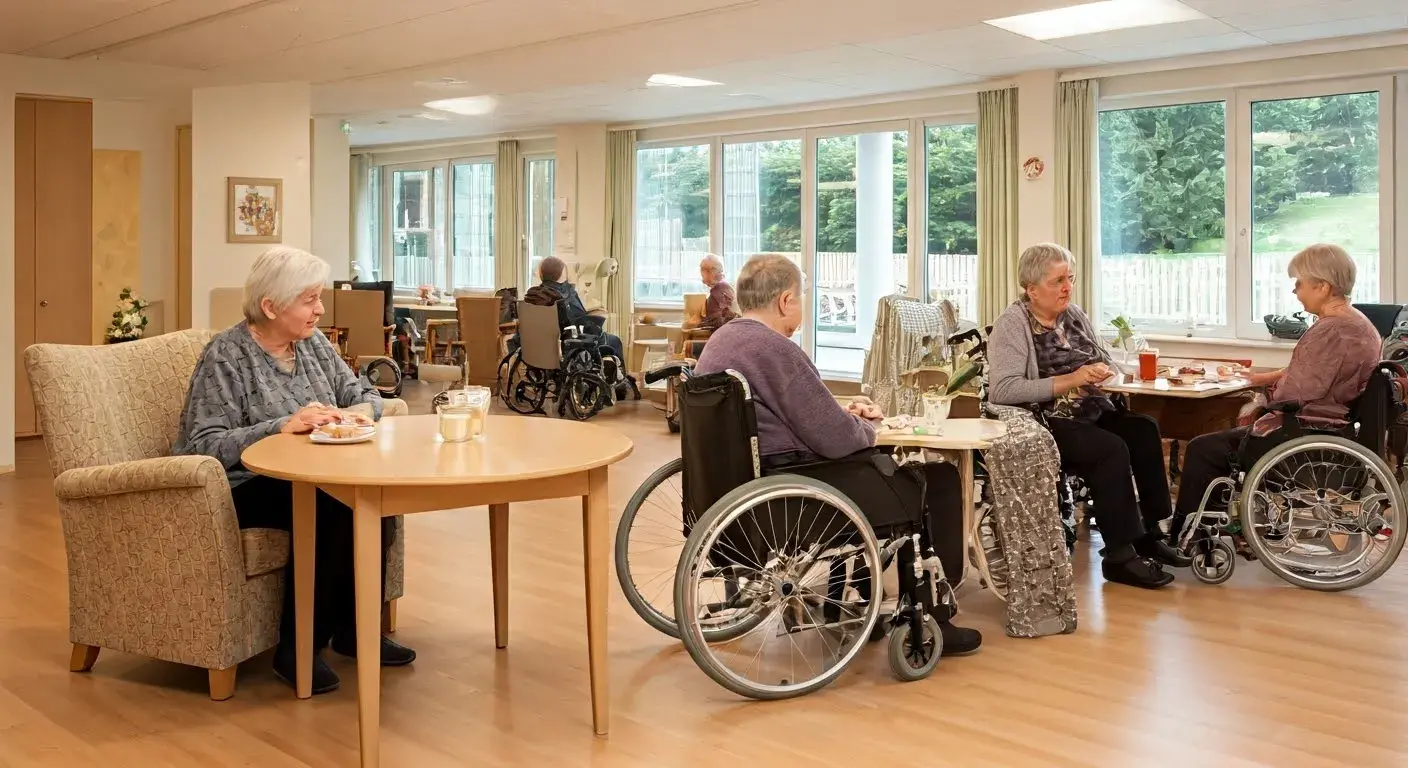One of the most crucial aspects of home surveillance is determining where to place security cameras in your home. If well installed and positioned, security cameras can record quality videos of the intruders while at the same time covering reception areas where people are likely to arrive. But that also means that the security cameras may have been installed in a really poor manner, and there may be huge blind spots in your security system. This guide will give helpful advice on the most effective places to install home security cameras to get the best coverage area.
Front Door Your front door is considered the most vulnerable point, which is used by any guest, invited, or unauthorized. Consequently, an important region where the Best Security Camera should be installed is the entrance, specifically, the door area so that it can capture individuals as they enter or exit through this point. Place the camera around 7-8 feet above the ground facing the door to capture all the movements of visitors from head to toe when they ring the bell or knock. This location will give a clear view of anyone coming or leaving the home through the front door.
Back Door The same applies to shooting the scenes at the back door. The last one is the rear door of a home and also is a ground-level access point that has to be closely guarded by a video security system. Place the outdoor camera securely on the upper part of the building near the eave or a lighting fixture, directing the camera to the back door and the area around the patio or deck. Modify it to the broad perspective of persons who can access or attempt to force their way into this vulnerable area of the house.
Garage Entrances If you have a garage joined to the house with a door leading directly to the house, positioning a camera to monitor this area provides another vantage point that captures a major entrance to houses, homeowners, guests, and intruders for homeowners. For interior coverage, mount the camera above the wall near the garage, the area that records the inner door that leads to the rest of the house. As for exterior coverage, place a small outdoor cam outside the garage to record people entering and exiting the area using their cars or accessing the yard tools and equipment stored in the garage.
Driveways and Walkways If you are to observe your property’s driveways or paths to doorways, you’ll have a wider angle with which to spot a car or persons approaching the home. Use thin security cameras in areas that are slightly out of reach like over garage doors or behind rain gutters. Ensure you use wide-view angle lenses to capture as much of the property entrance areas as possible. Recording general outdoor movement assists in safeguarding property that might be stocked outside while offering notifications to unknown personnel who might be accessing the compound.
First and Second Floor Windows are two equivalent resources. The windows on the main and upper levels of a home are also convenient entry points for burglars if they remain unlocked. Install outdoor bullet or dome cameras close to the first and second floor windows and make sure the lens will cover the entire frame of the window. If there are expensive things such as jewelry, electronics, or money in a home office or bedroom close to windows, ensure the weak points are well covered with effective video surveillance from the outside.
Room Access Hallways and Staircases Interior cameras are useful in tracking people moving from one room to another inside a house. Indoor wedge cameras should be placed in small areas and mounted on the walls or ceilings directing the lens downward to cover hallways and passages while people move around. They placed security cams at the top and bottom of stairwells to capture someone coming or going to the various floor levels. Rooms with bedrooms and floors with living spaces of less significance should have cameras monitoring areas that are accessible to both tenants and visitors.
Living Rooms and Dens Common living spaces such as living rooms, dens, and media rooms must be included in the list of rooms that require discreet installation of indoor cameras. Although not as dangerous as having isolated storage or home office spaces, seeing all the individuals invited into the heart of the home through cameras. The camera has to be mounted ideally at the main entry doorway to monitor anyone who enters or exits the living space in the room. For apartments and condos with neighboring units, indoor cams watching windows can also capture intrusion attempts by would-be burglars.
Home Offices and Studies If there is a home office or workroom with a computer, paper, money, or other valuable items, this room should be protected by security cameras. Since an office environment is a closed space, there are limited opportunities to escape, and that makes video footage crucial in pointing out a suspect. Mount the indoor cam to look over the room from the top left corner or angle towards the door to capture activity within the indoor area. Also, point the camera, particularly on areas where desktops, drawers, closets, wall safes, or any other place where you store your most important items of need for protection.
Other rooms with expensive assets Apart from home offices think about which rooms have your most valuable possessions that ought to be supervised. Living spaces containing fine jewelry, cash, expensive collections, or heirlooms might incite burglary and should be monitored with discreet cameras. Luxury recreation rooms with bars, billiards, and game or entertainment facilities are also likely to be popular. Almost any room where there are assets that need protection, or the room can open other parts of the house, requires a security camera to watch from the inside, capturing unusual events that occur with no one paying attention.
That gives information about most of the places both indoors and outside around a home to fix security cameras for full coverage. Ensure that cameras are tilted downwards from high altitudes or positions. Optimize to areas where major assets reside, or that offer access to rooms containing important items. Lastly, ensure that the cameras used have wide lens and pan ranges to reduce blind areas from the view of the camera. When installing home security cameras, one should follow these tips to have round-the-clock surveillance of essential indoor and exterior parts of the house for maximum protection of the home and its occupants.
Protect your home today with ADT’s top-rated security solutions!
Call now at +1 877-470-7879 to get a free consultation and find out how you can secure your home with the best in the business. Don’t wait—ensure your peace of mind with ADT!
